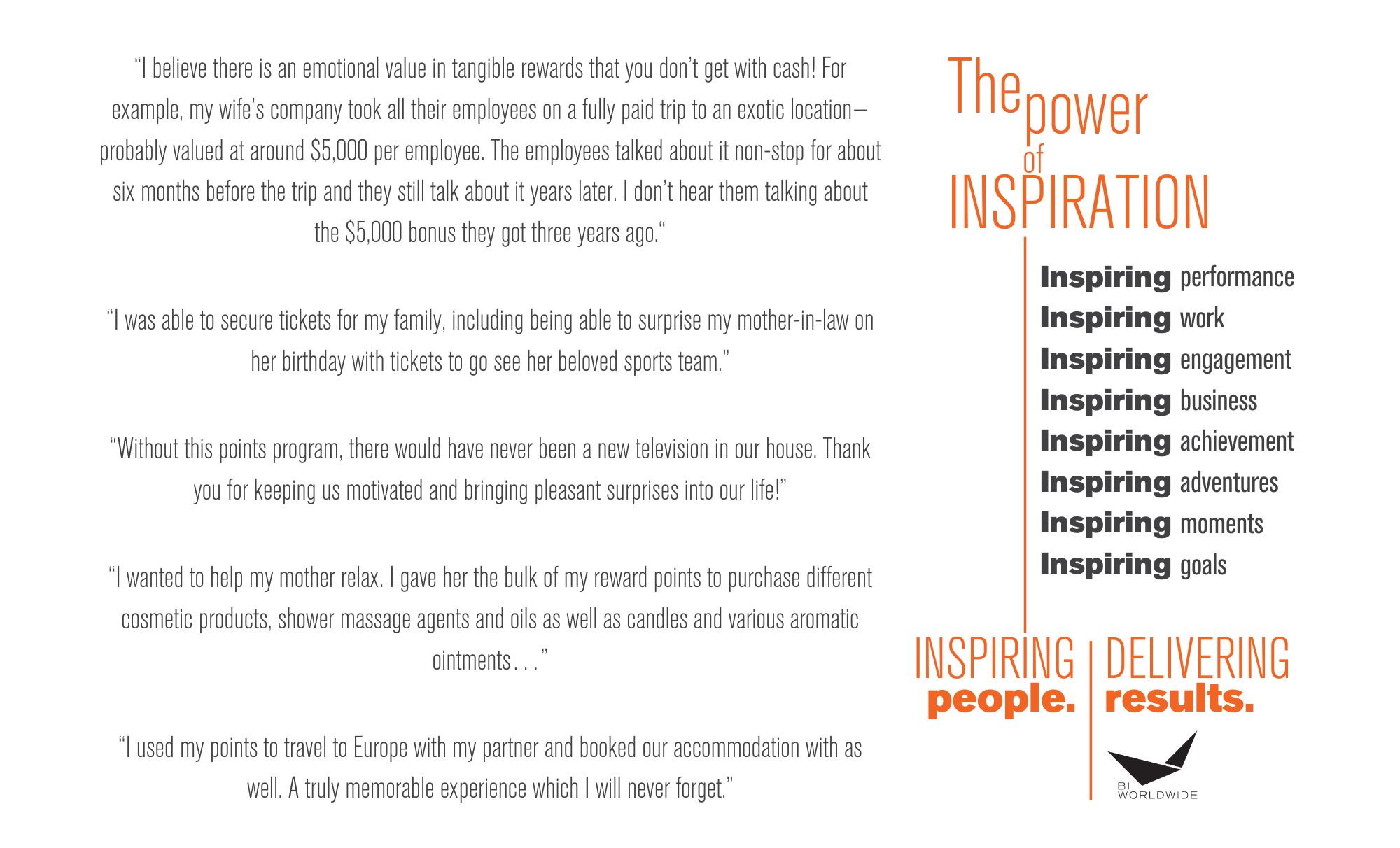Incentive Design and the Use of Rewards
Written by: Tom Nash
(View Author Bio)
A 2022 working paper (1) published by the Incentive Research Foundation, serves as a reminder on the importance of incentive design and motivating employees using a variety of non-cash rewards, as it often creates more emotional excitement compared to cash.

BI WORLDWIDE’s thought leadership on this topic matches the key findings of this research. Looking at it from a perspective rooted in behavioural science, individuals engage certain brain regions more actively than usual. Certain parts of the brain are associated with rational thinking and calculating things in terms of worth. When confronted with rewards tied to money (like gift cards), people treat them similarly to wages and salaries, therefore evaluating its worth from a monetary standpoint.
However, rewards that aren't easily quantifiable, such as travel, merchandise, and unique experiences, the brain skips this cognitive process by evoking emotional responses. Cash rewards trigger logical calculation, while hedonic rewards create an emotional response. This emotional response is due to the release of neurochemicals in the brain responsible for driving motivation (emotional excitement). See related article for more information.
MAIN FINDINGS AND RECOMMENDATIONS FROM THE PAPER
Frequency of Rewards
Consider increasing the frequency of the rewards to employees. In the experiment it found that providing more frequent rewards leads to more effort by employees even when the total amount of reward payout is held the same. For example, firms might want to consider paying out a monthly reward of $1,000 instead of an annual reward of $12,000. The total payout is the same, but the research suggests that the more frequent rewards can lead to better employee performance.
See related article
Mix up the Rewards
Keep an eye out for hedonic adaptation. Humans tend to become somewhat desensitised to events that they experience often (e.g., a song that you used to love just doesn’t have the same potent effect on you after you’ve heard it hundreds of times; the same goes for a restaurant or a fun experience like Top Golf). Repetition and offering the same thing gradually loses appeal (no excitement and buzz).
Offer Choice
If your non-cash incentive program is restricted in the range of choices you can offer, consider changing the reward type frequently to avoid hedonic adaptation.
Hedonic adaptation is a known obstacle in maintaining and lifting emotional excitement overtime, which is why BI WORLDWIDE’s Rewards Marketplace purposely provides a wide range of tangible (non-cash) rewards and experiences that employees can choose from that ensures a level of novelty and vividness on a regular basis.
Introduce Points-Based Reward Programs
Consider including or increasing the use of points-based rewards in your overall incentive and reward programs. This research adds to a growing body of prior research that explains the popularity and effectiveness of points-based incentive and rewards programs. The efficacy of the small but more frequent reward strategy is demonstrated in points-based reward programs where leaders and employees can recognise each other regularly and attach reward points. In most cases, the points rewarded have only a small cash value (making their frequent use affordable and scalable) but can be accumulated and redeemed for tangible rewards ranging from merchandise, experiences and trips.
See related article
RESEARCH FROM BI WORLDWIDE
In additional research by BI WORLDWIDE, we learned that people perform at a higher level when the awards are focused on wants, like experiences and merchandise, versus cash. This aligns with the extrinsic rewards efficacy continuum, developed by Dr. Ran Kivetz, a professor at the Columbia University Graduate School of Business.
We also learned that:
- Much of the time participants are redeeming for someone other than themselves – family trips, items for the home or gifts.
- They likely wouldn’t have spent their own money on the redemption. But with a strong rewards program, they are using their award points guilt-free for something they couldn’t get or wouldn’t get on their own.
- These participants are clearly setting goals and relating the intense effort in their job performance with earning in the program.
Clients of BI WORLDWIDE regularly share feedback from reward recipients that showcase the emotional response of points-based rewards and offering trips to achievers.

1. The Effect of Reward Frequency on Performance under Cash Rewards and Tangible Rewards












